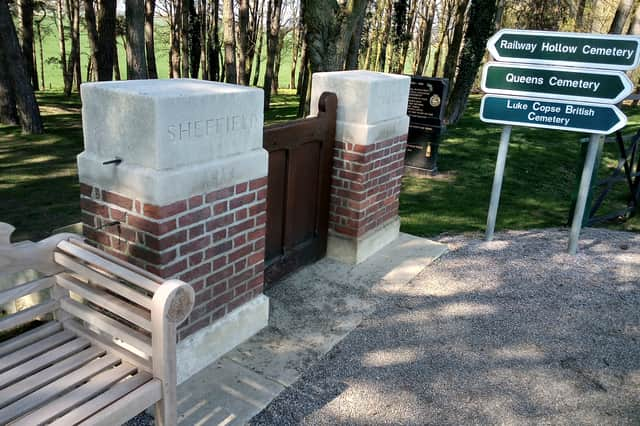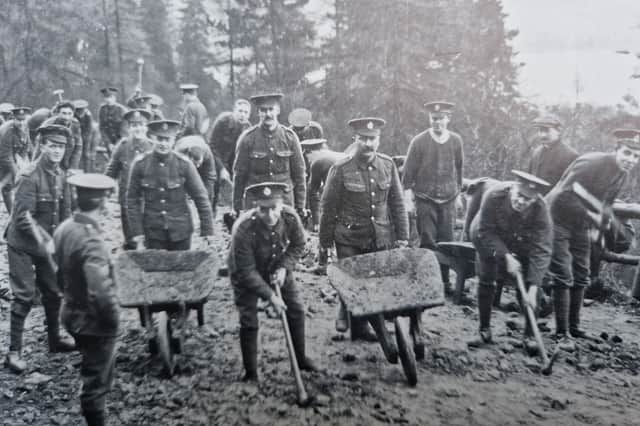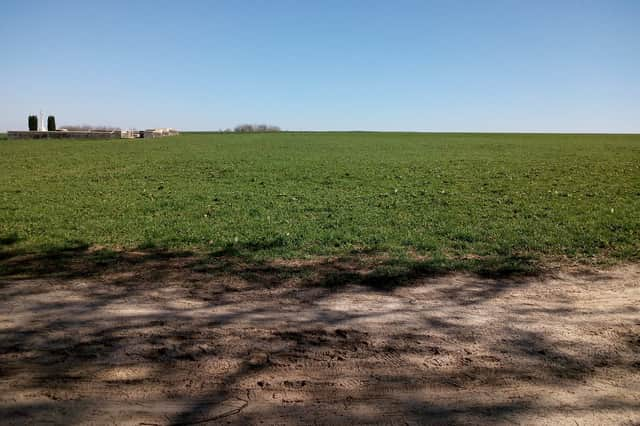I explored the Sheffield Pals Somme WW1 memorial in France, and was surprised by what I found
and live on Freeview channel 276
In a small wood in France, is one of Sheffield Council's most distant possessions.
You'll not be able to get any housing advice or pay your rent there - and few from the city go there.
Advertisement
Hide AdAdvertisement
Hide AdBut a few hundreds yards away from the road, that little outpost of the city, is the venue of a memorial to the hundreds of city soldiers who died at the Somme in 1916, during World War One.
This spring, I made the journey to see the memorial for myself, as I fulfilled a long held ambition to visit some of the locations where my grandfather would have been sent during that terrible war.


The Sheffield memorial was not on my original plan. My grandfather had been in France with the 1/7 Battalion, King's Liverpool Regiment, having lived in Aintree at the outbreak of the war.
I took the le Shuttle across the Channel, and headed off along the A26 autoroute, stopping off near Bethune, to find the sites of some of the 1915 battles that his battalion fought near Loos, including the Battle of Festubert, where they suffered horrific casualties.
Advertisement
Hide AdAdvertisement
Hide AdThat done, we headed south for a hotel in Albert, a French town near the Somme. With that as a base, we explored many of the memorials, including the main British memorial at Thiepval.


I've lived in Sheffield for many years. My son's school in the city has a memorial to its former pupils and teachers who died in World War One. With this in mind, my family and I also wanted to look at look at the Sheffield Pals memorial site. I didn't expect much though, on the basis of what I had seen at the other battlefields I had looked at, which had been now mostly just empty fields.
We headed off to find it, in fields near the town of Serre, the town that the Sheffield Pals, the 12th battalion of the York and Lancaster Regiment, were expected to attack towards in 1916.
Parking on a nearby roadside, we followed a footpath through a field, following a signpost.
Advertisement
Hide AdAdvertisement
Hide AdEventually, it led us into a gate, marked Sheffield Memorial Park. Walking through, I found a board, carrying a familiar logo - that of Sheffield Council. Sheffield was given the land in 1928 by the farmer who owned it, in exchange for a compensation fee.


The board described the details of the battle. It ended: "By 0750, half an hour after the first soldiers had left the trenches, the attack had failed. The wire had not been cut. The defenders came out of their deep dugouts when the barrage lifted before the advance started. The Accrington Pals suffered 585 casualties. The Sheffield Pals 513. First Barnsley Pals 266 and second 275."
Each battalion had started with around 1,000.
Well away from the road, the site was peaceful, with few people there. Behind it lay a small cemetery, although getting into that cemetery was tough, due to a large puddle in the gateway.
Yet the Sheffield memorial seemed more moving than that giant, famous memorial at Thiepval, which I also visited.
Advertisement
Hide AdAdvertisement
Hide AdThiepval felt like a work of art. The sheer number of names on its stone sides were moving, but it felt a million miles away from any feeling that there was a battlefield nearby.
The Sheffield memorial, though small, has a different quality. Shell holes remain in the ground, still there 105 years after the war finished, although now grassed over after a century of nature reclaiming the ground.
Before you, you see the fields that the Sheffield Pals had to walk up. There is a poignancy there that I did not find elsewhere, especially walking back to the road, alongside the fields where the battalion would have advanced.
There is no museum at Sheffield Memorial Park. It is far from vast. But it retains something that few memorials have retained, and that makes it all the more moving. On Armistice Day, it is good to know that the suffering of so many from the city is not forgotten near the French fields where they were sent.
I was surprised by the memorial - because it was more poignant than I expected through its moving, but effective, simplicity.
Comment Guidelines
National World encourages reader discussion on our stories. User feedback, insights and back-and-forth exchanges add a rich layer of context to reporting. Please review our Community Guidelines before commenting.
